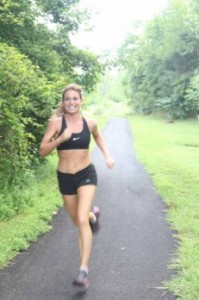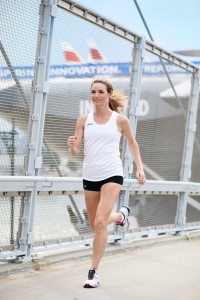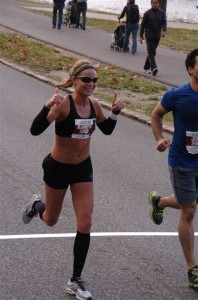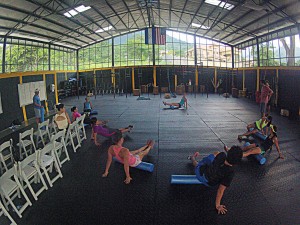 In a world where we are all constantly judged on our appearance, sport is a world where what you look like means absolutely nothing. Sure, runners are generally thin people, tennis players develop large and explosive muscles, swimmers have broad shoulders, and basketball players are tall and agile. These are generalizations, of course. While all of these sports require different ideal body types for outstanding success, not every basketball player is tall or every runner thin.
In a world where we are all constantly judged on our appearance, sport is a world where what you look like means absolutely nothing. Sure, runners are generally thin people, tennis players develop large and explosive muscles, swimmers have broad shoulders, and basketball players are tall and agile. These are generalizations, of course. While all of these sports require different ideal body types for outstanding success, not every basketball player is tall or every runner thin.
The cool thing about sport is that the person next to you can surprise you. I learned quickly to never judge the people in my race corral based on their physique, age or gender. I have watched beautifully fit looking runners struggle, and I have been passed by men with beer guts. I’ve sometimes been told that I don’t look like a runner. My response is that we all come in different shapes and sizes. No, I certainly do not have the large power muscles of a sprinter because guess what – I am not a sprinter. And no, I am not 10% body fat like elite female marathoners, but I am also not an elite marathoner.
One of the things I love about running is that when you race, it’s between you, the clock, and the runners around you. What you look like means absolutely nothing. All that matters is running hard, fast and smart. Doing your best beats out looking good. Sure, I would like to look good crossing the finish line, but if I look like hell and am beating every other female out there, then I suppose what I look like doesn’t mean a thing.
Ironically, most sports magazines don’t even have real athletes on the cover. Why? Because they are selling the “ideal” type of what they think the reader will buy. Take a popular running magazine, for example. Most of the folks on the covers run, but they aren’t athletes. They may run 10-15 miles per week, but they are also doing a ton of working out to look like models. Most aren’t racing, or training for a marathon. However, they are what runners who buy that magazine strive to look like. I don’t know about you, but that’s just one more slap in the face of what we are “supposed” to look like versus what we do. This is true for most athletic/fitness magazines and ads. The only real athletes ever on the cover of said magazine are the elites who are Olympians. They are household names in the running community and therefore grace the cover and pages at times. Do you think those elite athletes would make the cover if they weren’t seriously accomplished and running celebrities? Not a chance. Those athletes wouldn’t book the shoot. And you know what? Every person on that cover is photo shopped. No wonder we have complexes! And yes, sometimes there IS a model who is a serious athlete who kicks butt at their sport, but that happens far too rarely.
In a world so obsessed with image and judgement, I find race culture to be simple, accepting, and refreshing. To me, racing is about going out there and doing my best. It’s not a beauty pageant. As a female, that’s liberating. I don’t care if my body type isn’t “ideal” compared to the next gal on the beach in her bikini. My body is the physique it is because of what I do with it. I am an athlete and my body is my instrument. If I wanted an “ideal” body, I probably wouldn’t run the way I do. I also wouldn’t eat the way I do. But you know what? I’m happy with what I can train my body to do, and I love that food is my fuel.
When I hear women talking about their body and self-worth, I feel so sad. I want to hug those women, and then take them out for a run. Why? Well because running is fun. And you always feel better after running. And it feels amazing to stop viewing your body as something being judged and instead to view it as this unique, individual gift that you alone were given. I want to tell those women to stop reading tabloid magazines, and to instead focus on their happiness. The minute you stop being your own worst critic and choose to not care about being judged, you’ll feel free. I don’t know about you, but when I run, I feel free and capable of anything. Yes, even with imperfections we are all capable of being strong, happy, healthy people.
I challenge you to take note of who is in your next race corral and see if you make automatic judgements about the folks around you. Then play a game and see if your first impression turns out to be accurate or not. You might be surprised. And you will probably surprise somebody around you too.








